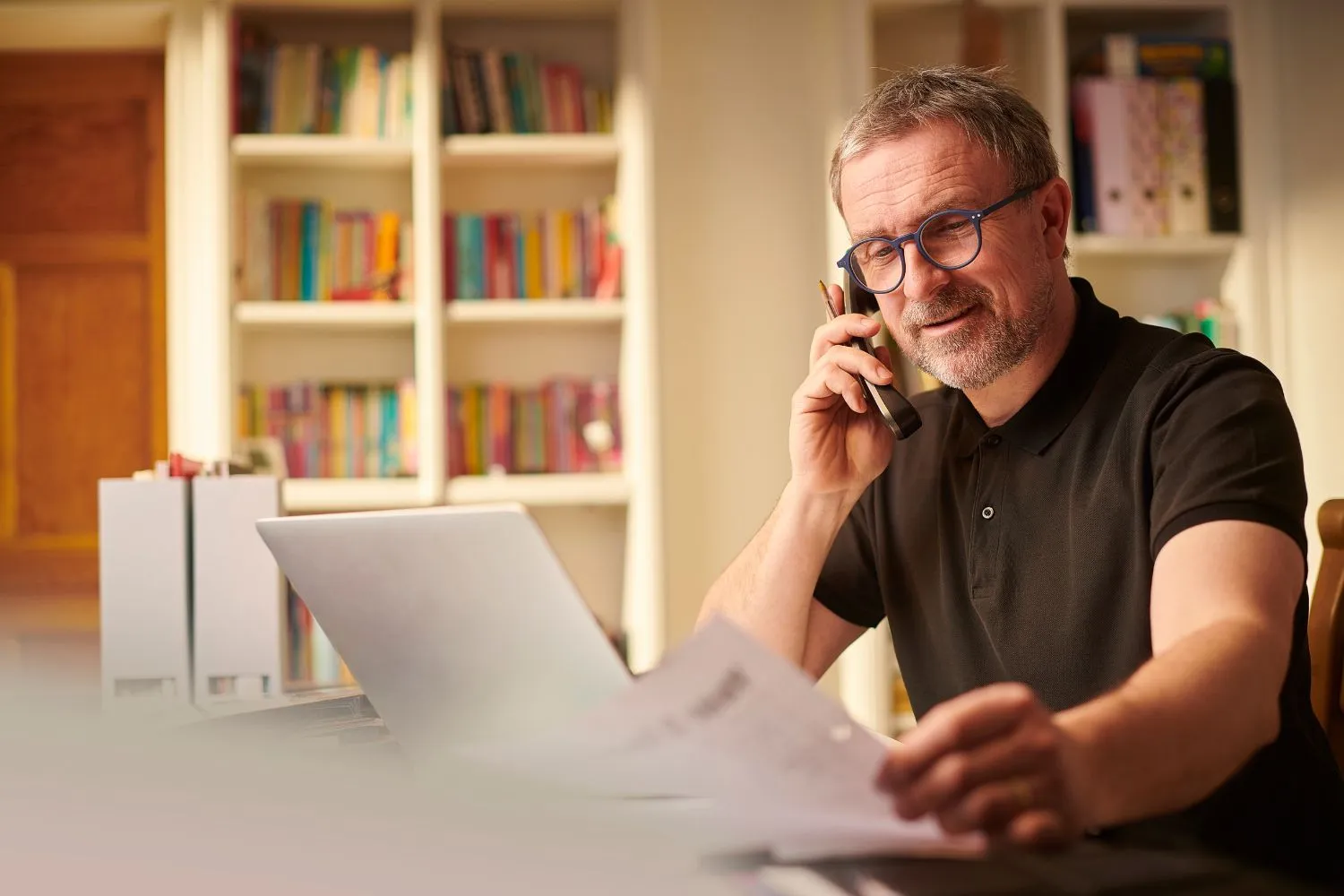As someone who also runs a small business, I understand how crucial it is to have a website that not only looks good, but also drives traffic and generates leads.
A well-designed website can be a game-changer for your business. It can help you attract new customers, establish credibility, and set you apart from your competitors.
But finding the right web designer can be a daunting task, especially if you’re not familiar with the process.
That’s why I’ve put together this article to share my insights and experience with you. I want to help you navigate the process of hiring a web designer and find someone who can create a website that meets your needs and exceeds your expectations.
With the right approach, you can create a website that helps you achieve your business goals and takes your brand to the next level.
Determine Your Needs
Before you start looking for a web designer, it’s important to determine your needs.
A good website should be tailored to your business goals and target audience.
Here are some questions to ask yourself:
1. What is the purpose of my website?
Think about the primary goal of your website. Do you want to generate leads, sell products, or provide information? Understanding the purpose of your website will help you communicate your needs to the web designer.
2. Who is my target audience?
Think about the people who will be visiting your website. What are their needs and preferences? What kind of information are they looking for? Understanding your target audience will help you create a website that meets their needs and appeals to them.
3. What features and functionality do I need?
Think about what features and functionality you need on your website. Do you need a blog, a contact form, or an e-commerce platform? Make a list of the features and functionality you need and communicate them to the web designer.
4. What is my budget?
Think about how much you’re willing to spend on your website. A good website can be an investment in your business, but you don’t want to overspend. Make sure you have a clear budget in mind before you start looking for a web designer.
Once you’ve answered these questions, you’ll have a better idea of what you need from a web designer. This will help you communicate your needs effectively and ensure that you get a website that meets your expectations.
Research and Identify Potential Web Designers
Now that you’ve determined your needs, it’s time to start looking for web designers who can create a website that meets those needs.
Here are some steps to take:
Ask for recommendations from friends, family, and colleagues
Word of mouth is a powerful tool when it comes to finding a good web designer. Ask people you trust if they’ve worked with a web designer they would recommend.
Search for web designers online and check their portfolios
Use search engines and social media to find web designers in your area or who specialise in your industry. Check their portfolios to see if they’ve created websites that are similar to what you’re looking for.
Attend local networking events and meet web designers in person
Networking events can be a great way to meet web designers in person and get a sense of their personality and communication style. Attend events in your area and bring business cards to exchange with potential web designers.
When evaluating potential web designers, pay attention to their experience, portfolio, and communication skills
Make sure they have experience working with businesses similar to yours and that their portfolio showcases websites that are visually appealing and easy to navigate.
During the initial consultation, ask questions about their design process, timeline, and pricing structure. A good web designer should be able to explain their process in a way that’s easy to understand and answer your questions in a timely and professional manner.
Once you’ve identified potential web designers, narrow down your list to a few candidates and ask for references. Contact their references and ask about their experience working with the web designer. This will give you a better sense of their work style and professionalism.
Evaluate the Proposal
Once you’ve found a web designer who you think is a good fit, it’s time to evaluate their proposal.
By evaluating the proposal carefully, you’ll be more likely to find a web designer who not only can create a website that meets your needs, but also fits your budget.
A good proposal should outline the scope of the project, timeline, and cost.
Here are some things to look for:
A clear description of the project scope and timeline
Make sure the proposal outlines what the web designer will deliver and when. This should include a description of the website’s features and functionality, as well as a timeline for when each deliverable will be completed.
A breakdown of the cost and pricing structure
Make sure the proposal includes a breakdown of the cost and how it will be structured. This should include any upfront costs, as well as ongoing maintenance and support fees.
A list of deliverables and milestones
Make sure the proposal includes a list of deliverables and milestones. This will help you track the progress of the project and ensure that everything is delivered on time.
When evaluating the proposal, make sure you understand the terms and ask questions if anything is unclear.
If the proposal is outside of your budget, don’t be afraid to negotiate. A good web designer should be willing to work with you to find a solution that meets your needs and fits within your budget.
It’s also important to make sure the proposal includes a plan for ongoing maintenance and support. A good web designer should offer ongoing support and maintenance services to ensure that your website stays up-to-date and functioning properly.
Work with Your Web Designer
Once you’ve signed a contract with your web designer, it’s time to start working together.
By working closely with your web designer, you’ll be more likely to get a website that meets your needs and exceeds your expectations.
Communication is key to a successful project, so make sure you stay in touch throughout the design process.
Here are some tips for working with your web designer:
Provide feedback on the design and functionality of the website
During the design process, make sure you provide feedback on the design and functionality of the website. Be specific about what you like and don’t like, and suggest changes if necessary. Remember that the web designer is there to create a website that meets your needs, so your feedback is important.
Be open to suggestions from the web designer
Remember that the web designer has experience and expertise in creating effective websites. Be open to their suggestions and ideas, and consider incorporating them into the design of your website.
Stay in touch throughout the design process
Make sure you stay in touch with the web designer throughout the design process. Ask for updates on the progress of the project and provide feedback in a timely manner. This will help ensure that the project stays on track and is completed on time.
Make sure the website is optimised for search engines and mobile devices
During the design process, make sure the website is optimised for search engines and mobile devices. This will help you rank higher in search results and ensure that your website is accessible to users on all devices.
Launch and Maintain Your Website
Before launching your website, make sure you test it thoroughly to ensure that everything is working as it should.
Check for broken links, typos, and other errors that could detract from the user experience.
Once you’re satisfied with the website, it’s time to promote it to your target audience.
Here are some tips for launching and maintaining your website:
Use social media, email marketing, and other channels to drive traffic to your website and generate leads
Make sure you promote your website through social media, email marketing, and other channels. This will help you drive traffic to your website and generate leads.
Update your content regularly
Make sure you update your content regularly to keep your website fresh and relevant. This could include adding new products or services, publishing blog posts, or updating your portfolio.
Fix any issues that arise
If you notice any issues with your website, such as broken links or slow loading times, make sure you fix them as soon as possible. This will help ensure that your website is functioning properly and providing a good user experience.
Consider ongoing maintenance and support
Consider working with your web designer to provide ongoing maintenance and support for your website. This could include updating software, fixing bugs, and providing technical support.
Frequently Asked Questions
How much does it cost to hire a web designer?
The cost of hiring a web designer can vary depending on the complexity of the project, the experience of the designer, and other factors. It’s important to have a clear budget in mind before you start looking for a web designer.
How long does it take to create a website?
The timeline for creating a website can vary depending on the scope of the project, the complexity of the design, and other factors. A good web designer should be able to provide a timeline for the project during the proposal stage.
How involved do I need to be in the design process?
It’s important to be involved in the design process to ensure that the website meets your needs and expectations. Make sure you provide feedback on the design and functionality of the website and stay in touch with the web designer throughout the process.
What should I look for in a web designer?
When evaluating potential web designers, pay attention to their experience, portfolio, and communication skills. Make sure they have experience working with businesses similar to yours and that their portfolio showcases websites that are visually appealing and easy to navigate.
What should be included in a proposal from a web designer?
A good proposal should include a clear description of the project scope and timeline, a breakdown of the cost and pricing structure, and a list of deliverables and milestones. Make sure you understand the terms of the proposal and ask questions if anything is unclear.
How do I maintain my website after it’s launched?
It’s important to update your content regularly and fix any issues that arise. Consider working with your web designer to provide ongoing maintenance and support for your website.
Conclusion
Hiring a web designer can seem overwhelming, but with the right approach, you can find a designer who can create a website that meets your needs and exceeds your expectations.
Remember to determine your needs, research and identify potential web designers, evaluate the proposal, work with your web designer, and launch and maintain your website. By following these steps, you can create a website that helps you achieve your business goals and stands out from your competitors. Good luck!

